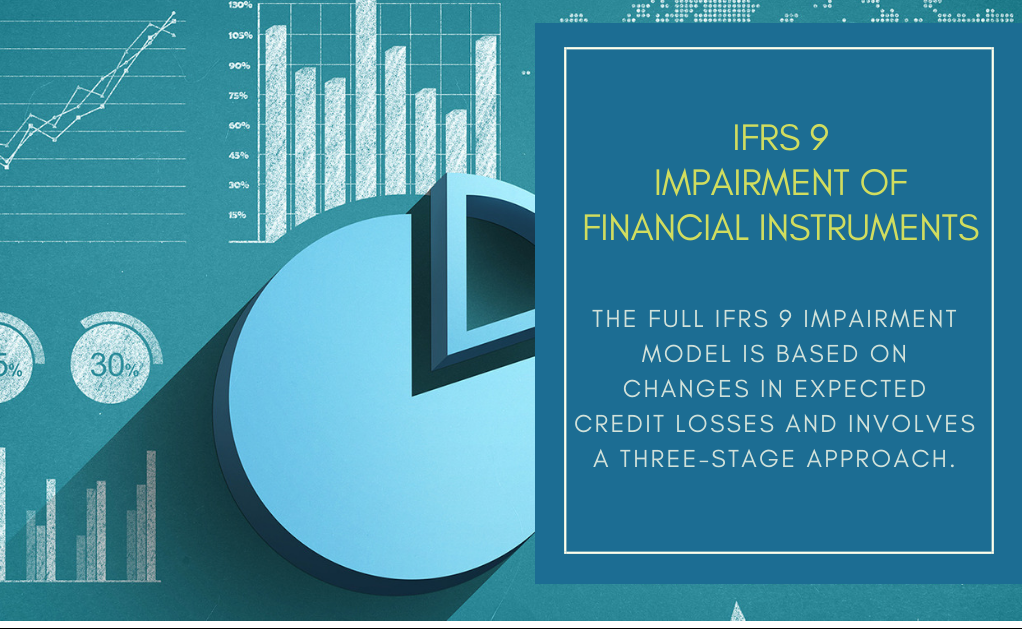IFRS 9 – Impairment of Financial Instruments

Expected Credit Losses
In July 2014 the IASB published IFRS 9, ‘Financial instruments’, which replaces most of the guidance in IAS 39. This standard introduces an expected credit loss (ECL) impairment model that applies to financial instruments which will result in earlier recognition of losses.
Overview of the model
The full IFRS 9 impairment model is based on changes in expected credit losses and involves a three-stage approach. Expected credit losses are determined as follows at the end of each reporting date:
Stage 1: Credit risk has not increased significantly since initial recognition – recognize 12 months of ECL.
Stage 2: Credit risk has increased significantly since initial recognition – recognize lifetime ECL, and interest is presented on a gross basis.
Stage 3: Financial asset is credit impaired recognize lifetime ECL but present interest on a net basis (i.e. gross carrying amount less credit allowance).
However, as a practical expedient, a ‘simplified’ model applies for trade receivables with maturities of less than 12 months. For other long-term trade and lease receivables (i.e. trade and lease receivables with maturity of longer than 12 months), entities have a choice to either apply the ‘full’ three-stage model or the ‘simplified’ model.
Financial assets on which ECL will apply includes:

| Particulars | Stage 1 | Stage 2 | Stage 3 |
|
Also referred as |
Performing | Underperforming | Non-performing |
| Recognition of expected credit losses | 12-month expected credit losses | Lifetime expected credit losses | Lifetime expected credit losses |
| Interest revenue | Effective interest on gross carrying amount | Effective interest on net (carrying) amount | |
- debtors
- loans given to group companies / inter corporate loans
- any debt investments
- loan commitments
- financial guarantee contracts
- lease receivables etc.
- An entity does not wait until the receivable is past due before a provision is raised.
- Under the new model, entities will have to update their historical provision rates with current and forward-looking estimates.
- The amount of credit loss recognized is based on its historical default rates adjusted for forward looking estimates that reflect current and forecast credit conditions.
- Under the ‘simplified’ approach, entities with short-term trade receivables will recognize ‘lifetime expected credit losses’ from the first reporting period
- Entities may have to consider grouping receivables based on attributes other than debtors’ days to improve the accuracy of estimating expected credit losses (e.g. geographical region, industry, customer rating etc.).
Tag: Ifrs


